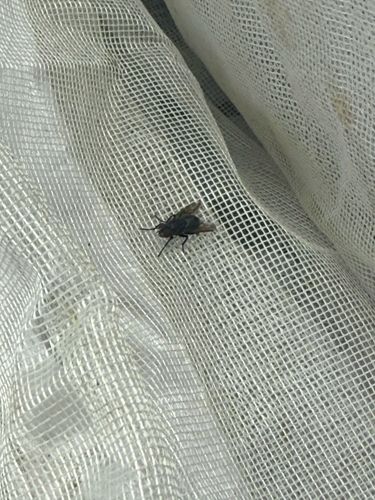House Fly
Scientific Name: Musca domestica
Order & Family: Order: Diptera, Family: Muscidae
Size: Typically 6 to 7 mm (0.24 to 0.28 inches) in length, with a wingspan of 13 to 15 mm (0.51 to 0.59 inches).

Natural Habitat
House flies are ubiquitous and can be found almost anywhere humans and animals live, especially in areas with decomposing organic matter, such as garbage dumps, farms, homes, and food processing facilities.
Diet & Feeding
Adult house flies feed on a wide range of liquid or semi-liquid substances, including decaying organic matter, feces, garbage, rotting fruits and vegetables, and animal carcasses. They have sponging mouthparts, dabbing and sucking up liquefied food. Larvae feed on the decaying organic matter they are laid in.
Behavior Patterns
House flies undergo complete metamorphosis with four stages: egg, larva (maggot), pupa, and adult. They are highly attracted to decaying organic matter for feeding and laying eggs. Adults often rest on surfaces, especially at night. They are known for their rapid reproduction and ability to fly long distances.
Risks & Benefits
Risks: House flies are significant vectors of disease, carrying and transmitting numerous pathogens (bacteria, viruses, parasites) that cause diseases like typhoid fever, cholera, dysentery, salmonellosis, and E. coli infections. They contaminate food and surfaces by picking up pathogens on their bodies and in their digestive tracts. Benefits: In natural ecosystems, house flies and their larvae play a role in decomposition, breaking down organic waste. They are also a food source for various predators.
Identified on: 8/31/2025